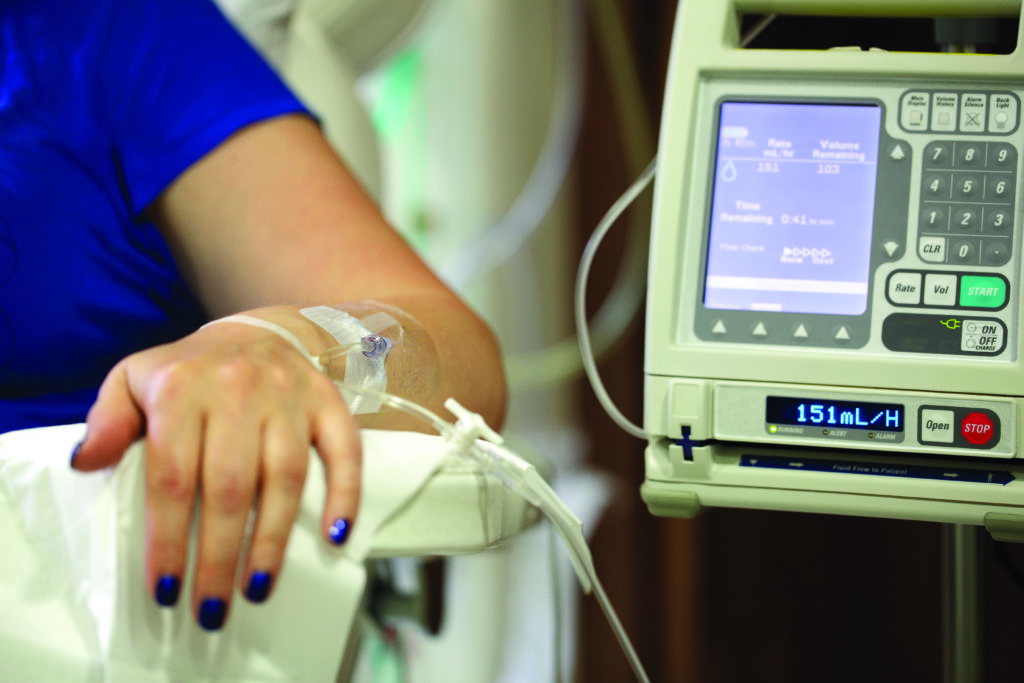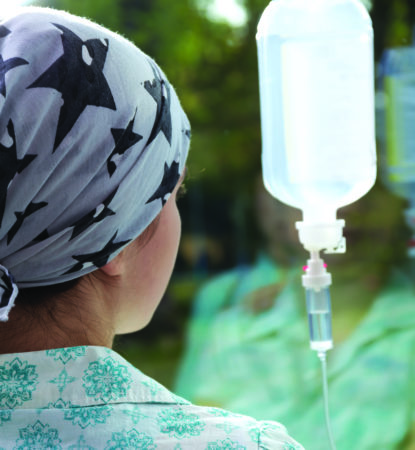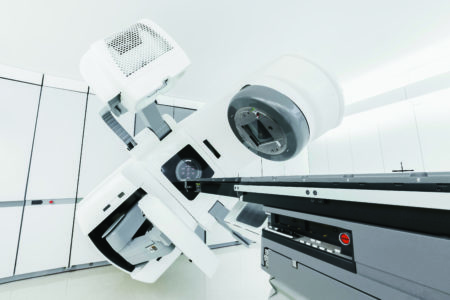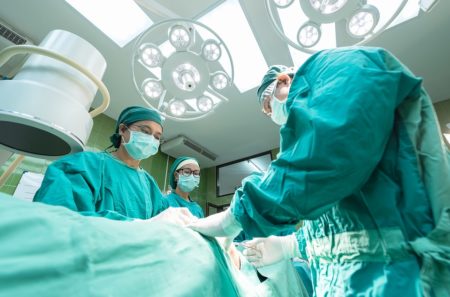Treating cancer

There are three major types of cancer treatment: surgery, radiotherapy and chemotherapy
1.Chemotherapy

The first chemotherapy drug was developed using mustard gas, a chemical weapon used during WWI. Scientists had noticed that the poison killed the fast-dividing cells of the bone marrow, and so they adjusted the weapon to make nitrogen mustard, a treatment that could kill rapidly replicating cancer cells. Nitrogen mustard belongs to a group of drugs known as alkylating agents, which work by adding chemical units called alkyl groups to DNA. These interfere with the double helix structure, causing the genetic code to break apart. Other chemotherapies work in similar ways. Heavy metals cross-link DNA, preventing it from being read. Topoisomerase inhibitors stop the DNA helix from unwinding, and antimetabolites work by mimicking molecules involved in copying DNA, stopping the new sequence from being made. Anti-microtubule, or spindle poisons, stop cells from splitting apart, and cytotoxic antibiotics stick to the DNA helix, prevent unwinding, link different strands of DNA together or break DNA into fragments. These treatments are particularly harmful to cells that are trying to make copies of themselves because they target DNA replication and cell division. This is good for catching fast-dividing cancer cells, but it isn’t perfect. Cancer cells aren’t always dividing, so some cells manage to escape the treatment, and lots of healthy cells also divide rapidly, too. Hair, skin and bone marrow (which makes blood cells) are all damaged by chemotherapy, leading to side-effects like hair loss, sickness and a weakened immune system.
2.Radiotherapy

Radiotherapy was developed in the early 20th century and works by bombarding cancer cells with radiation. When the water molecules inside the cells are hit they split apart in a process called radiolysis. This makes highly reactive free radicals with an unpaired electron that attacks bonds belonging to other molecules, setting off a chain reaction that damages DNA. Radiotherapy causes both strands of the DNA to break close together, a lesion known as a ‘double-strand’ break. This makes the helix unstable and it starts to unwind. Cells can repair a bit of this kind of damage, but the more radiation they receive, the more likely they are to die. The most common way to deliver radiotherapy is by using a linear accelerator (LINAC). It uses microwaves to make electrons, which hit a heavy metal to make X-rays. CT or MRI scans are used to pinpoint the exact location of the tumour inside the body, and the X-rays are then shaped to fit the outline of the tumour. This is done by blocking part of the beam using sheets of metal known as a multileaf collimator. X-rays go all the way through the body, so the machine rotates to deliver beams from all angles, giving the maximum dose where the beams cross over at the site of the tumour, minimising the amount of radiation received by the surrounding healthy tissue.
3.Surgery

Surgery is one of the oldest and most effective cancer treatments. If the cancer hasn’t spread, surgeons take out the whole tumour and some of the surrounding area in case there are any cells that can’t be seen. Nearby lymph nodes may also be removed as these are often the first place a cancer will spread to. If the whole tumour cannot be removed, surgery can also be used for ‘debulking’, where as much of the tumour is removed as possible so the rest can be treated with chemotherapy or radiotherapy. Surgery can also be palliative, relieving symptoms when cancer cannot be cured. Not all lumps are tumours and not all tumours are cancer, so surgery is often used for cancer diagnosis, too. A small sample of tissue, known as a biopsy, is removed and either frozen solid or embedded in wax so that it can be thinly sliced. These slices are stained so that a pathologist can examine the structure of the cells and tissue. Cancer cells look different under a microscope, creating disorganised structures in normally orderly tissues, and they also display specific molecular or genetic markers that single them out. These not only help with a cancer diagnosis but can also be used to determine the type of cancer, how advanced it is and the best form of treatment to use against it.
This article was originally published in How It Works issue 103, written by Laura Mears
For more science and technology articles, pick up the latest copy of How It Works from all good retailers or from our website now. If you have a tablet or smartphone, you can also download the digital version onto your iOS or Android device. To make sure you never miss an issue of How It Works magazine, subscribe today!




